Nenthead Mines - Cumbria |
||
 The vast network of accessible mine workings at Nenthead, in Cumbria, can easily be overlooked in favour of the other mining centres found in the area. The North Pennines Heritage Trust have their base in the quiet village, and since 1994 have opened the mine's surface buildings and remains to the public. The centre has two subterranean attractions; the 'show mine', constructed in "Carrs Mine" gives visitors the ability to experience underground conditions for themselves, whilst the Trust's recent purchase of "Brewery Shaft" has led to the construction of a visitor's centre across the top. Flood lights have been lowered down the shaft to illuminate it's depths and show the remains of the hydraulic compressor system that once operated in the shaft. The show mine and "Brewery Shaft" only offer a tiny glimpse of the subterranean gems hidden in the area, the vast majority of which only being accessible to suitably equipped mine & cave explorers. One of the most popular destinations is "Smallcleugh Mine", as this has gained approved for use by local Outdoor Centres to take groups on underground explorations. The standard 'approved' route only touches a small proportion of the accessible workings on it's way to the 'Ballroom Flat', a large chamber which, unusually for the area, wasn't backfilled with waste stone (deads). The flat gained it's 'Ballroom' title in September 1901 after the Vielle Montagne Company entertained 28 guests from the local Masonic Lodge with a grand feast. The food was prepared by a local hotel, before being trammed to the chamber underground.
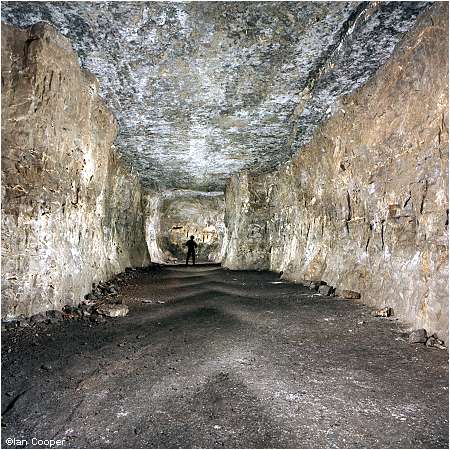 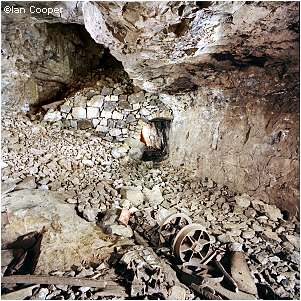 Partly due to the relatively heavy traffic through the workings there's very little in the way of artefacts on display. One notable exception to this is in 'Wheel Flats', so named because of the abandoned set of wheels that can be found within it's walls. This unofficial name is now proudly announced by a series of modern signs placed alongside the wheels and fastened to the chamber wall.
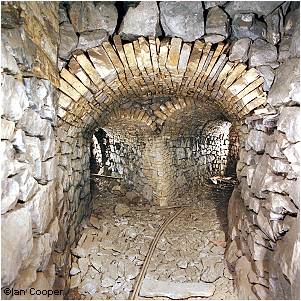 It's not possible to progress very far through the Nenthead mines before becoming aware of the characteristic stacked "deads" and arching that typify mining in the area. Rather than transport waste stone out of the mine, a very uneconomic waste of resources, the "dead" rock would be neatly stacked in worked out chambers, leaving narrow paths through the waste to maintain access. When the pile became too high, quality stone would be brought into the workings from the nearby 'Flinty Fell' quarry, this would be used to build arching over the access path. At intervals along the route hoppers were constructed, thus allowing the mining of ore to continue near the roof as the piles of waste grew higher. Mine trucks would be lined up with the mouth of the hopper so ore could be loaded from above.
 Adequate ventilation is important in any confined space, and mine workings are no exception. As the underground workings grew, a maze of interconnecting chambers and passageways were left behind. The ventilating air would naturally tend to take the most direct route through the mined out void, often leaving ventilation of the mine uneven. To control the flow of air a series of ventilation doors were installed at strategic points throughout the workings, these would force the air to flow through and give sufficient ventilation to ensure dispersal of explosive fumes and adequate air to work. Two complete ventilation doors can still be seen in Smallcleugh, and an empty door frame marks where a third once stood.
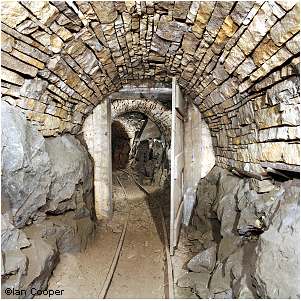 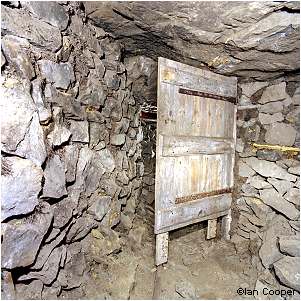 Most of Smallcleugh mine can be explored without the use of electron ladders or SRT ropes, although their presence opens up even more workings to the eager explorer. The Vielle Montagne Zinc Company bought leases to mine the entire Nenthead area in 1896, it was their policy to link together all of their mines whenever feasible. The legacy this policy left behind is an interconnecting network of mine workings that stretch for miles in all directions. The practice of interconnection has also left a grey region where the various workings meet. In general the mine names really refer more to the entrances themselves than the workings hidden away behind them. Each of the working areas within the mines were referred to by their own name, usually based on the vein being worked, this meant the entrance used to access the vein was fairly immaterial as they were all owned by the same company. Today the names tend to refer to the workings at the same height as, and directly accessed by, the entrance. Levels at horizons between the entrances can sometimes be associated with different mines, depending on who you talk to.
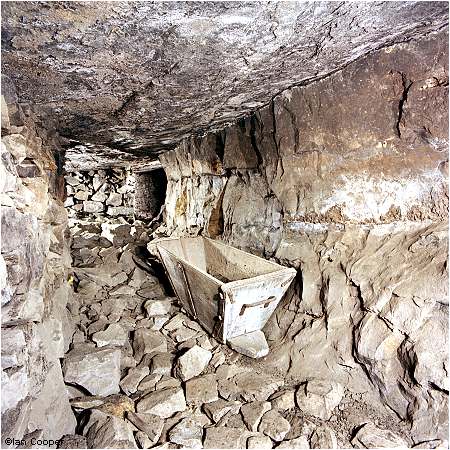 Connections between the main mines of the complex are largely still intact and with care can still be negotiated, this means that a series of through trips can be arranged passing through numerous mines before emerging back at surface. All of the mines have open entrances and can be explored independently, or any number of through trips between them can be achieved as there's often more than one link between.
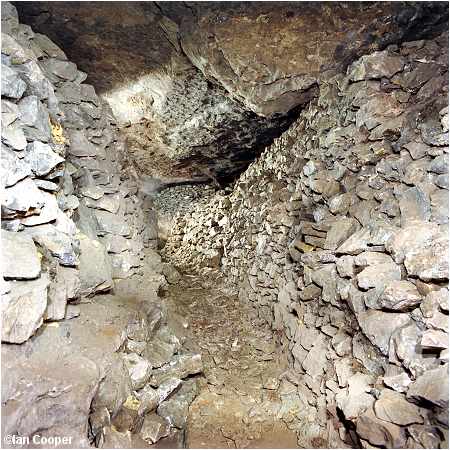 |
||
| All photographs are the work and copyright of Ian Cooper. | ||
